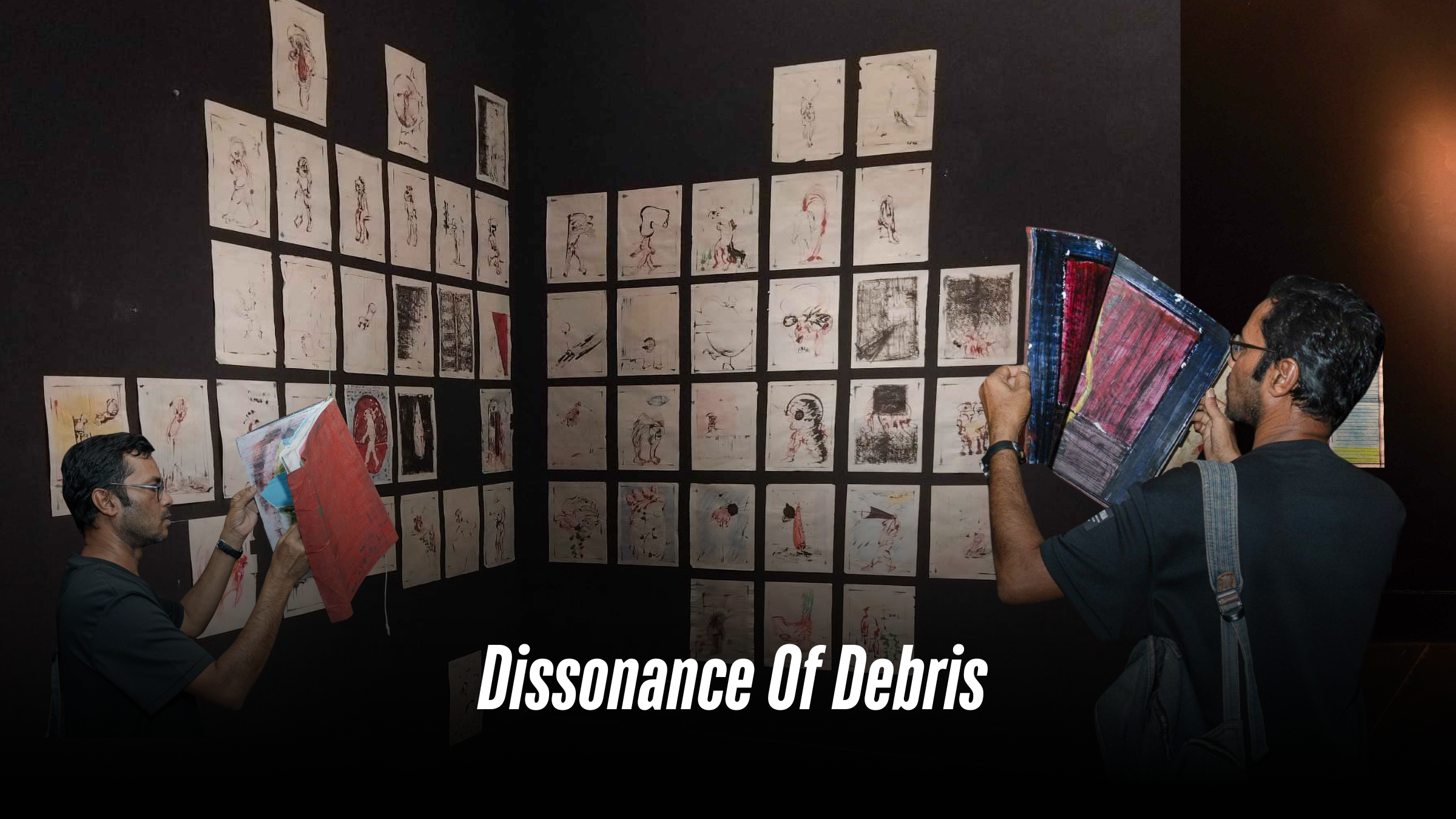
Dissonance Of Debris
From May 17th to 31st, the solo painting exhibition titled “Debris” by Kazi Salahuddin Ahmed adorned the walls of La Galerie, Alliance Française de Dhaka, Dhanmondi. The two-week-long, thought-provoking exhibition featured nearly 30 works on board paper, providing spectators with a glimpse into the artist’s most recent studies. Remembering is a kind of rebellion in Kazi Salahuddin Ahmed’s universe. His solo exhibition, “Debris,” was an uncompromising documentation of human vulnerability. The artist’s recollections of Bangladesh’s 1971 Liberation War seep into modern tragedies—Gaza’s annihilation, the Rohingya exodus, and Kashmir’s stifled cries. The paintings didn’t merely show ruins; they also resurrected spirits. Ahmed’s life had several eras of turmoil. Born within a world transformed by partition and war, his early work in the 1980s was abstract, but the twenty-first century tightened his emphasis. The song “Debris” captures this progression. Each piece is a palimpsest, with layers of pigment representing the strata of history, where erasure and evidence fight silently. Ahmed’s use of board paper as canvas makes a statement in and of itself. Board paper repels, as opposed to ordinary canvas, which absorbs, forcing the artist to handle surface tension. The resulting sculptures have a temporary quality, as if they would disintegrate like the makeshift shelters in Cox’s Bazar’s refugee camps. Though anchored in Bangladeshi stories, “Debris” speaks to a lexicon of global migration. The exhibition’s centerpiece, “Babel Fragment” (2024), depicts the mythological tower as a jagged silhouette against a sulfurous hue. Its shattered planes evoke both bombed-out Aleppo and the decaying tenements of Old Dhaka. Ahmed, who has flown from Paris to Islamabad, appears to imply that rubbish knows no boundaries. In “Eclipse of Return” (2024), a skeletal stairway rises into the emptiness, its steps fractured like vertebrae. Nearby, “Archive of Dust” displays a child’s sneaker half-buried in a thick texture that mimics charred dirt “The utter erasure of Gaza, which was once full of life; the ongoing miseries of people in Kashmir; or the hopelessness faced by displaced Rohingyas attempting to make a living in camps in Chattogram—all of this jostles the mind as one attempts to ponder the future of the human race. Furthermore, it is difficult to leave behind the legacy of Bangladesh’s repeated failures to shape a future. The people’s desire for political stability has always been a never-fulfilled dream in our country. The demise of the authoritarian dictatorship has undoubtedly allowed everyone to focus on a future beyond the current system, but it appears that things are still breaking apart, leaving us with only emotional rubble,” observed famous art critic Mustafa Zaman. The intimacy of “Debris” sets it apart from other forms of protest art. In “Letters Unsent,” bits of Urdu and Bangla letters emerge behind layers of gray, like voices muted by time. The piece is similar to Ahmed’s 2018 series on refugee diaries, but the language is virtually illegible—a metaphor for history’s selective memories. Written By Shahbaz Nahian
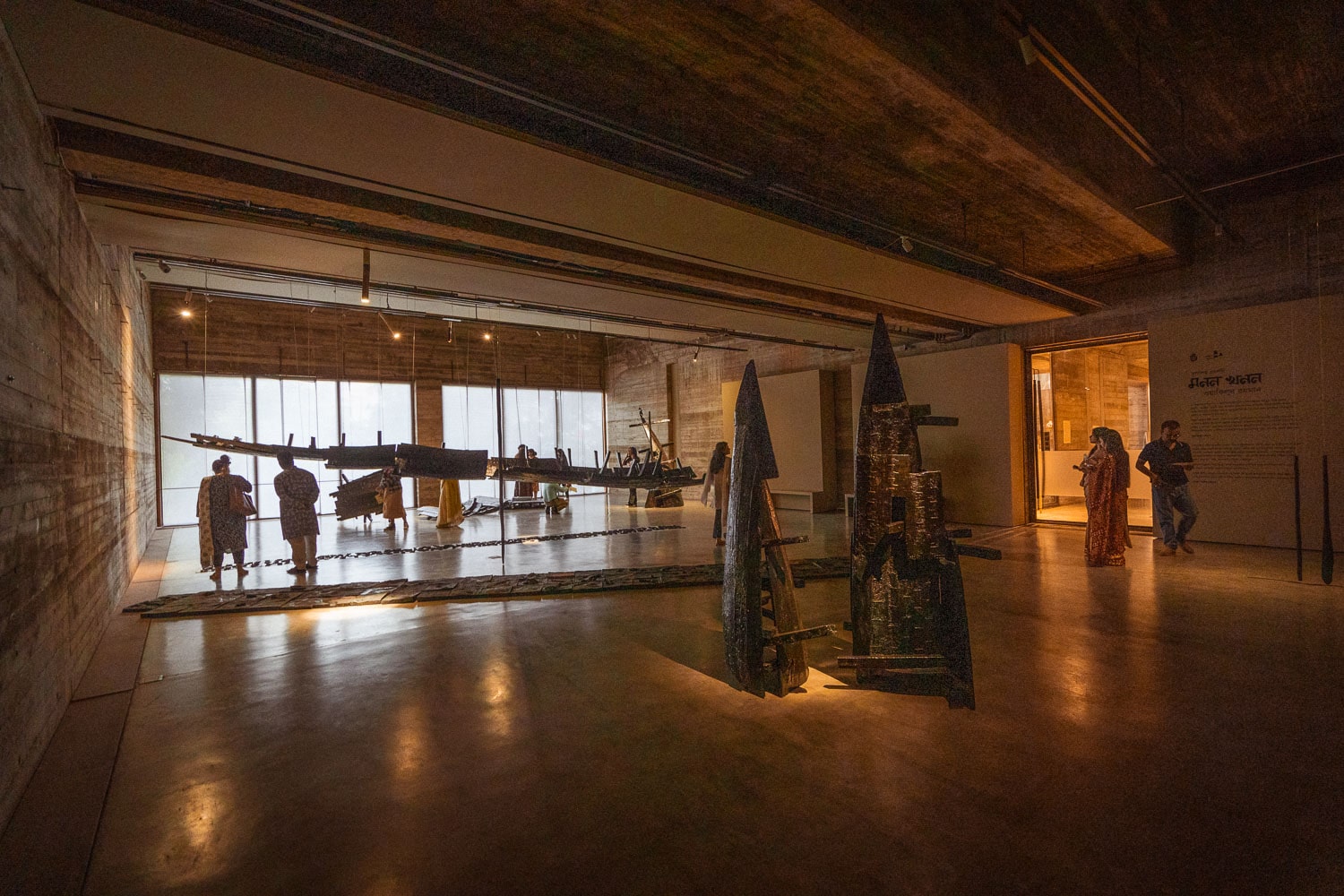
Through the eyes of artist Wakilur Rahman
A video shows Mr. Rahman in the hall with his exhibits, elaborating on his interpretations as remnants of his journey. “The exhibits are a reflection of my journey with art at different times,” he said, as the camera moved to show the hanging base of a traditional riverine boat. Wakilur Rahman has been working with social issues through his artwork since the 80s. He has recently hosted an exhibition by the name “Monon Khonon” at Bengal Shilpalay. It visualized through installments, the cultural aspects that portray the life in the delta regions. The acclaimed artist often ponders over the contour of our thoughts, imaginations, and emotions, and digs into this diversity in people from different regions. Going through the artwork in the exhibition one noticed a dark theme over three earthly elements: A fragment of the exhibition focused on wet mud and imprints on wet mud. The artist believes that mud is instilled in our physical molding and is a crucial part of life. Upon entrance one is greeted by the bottom half of a boat which depicts the enthusiasm of the artist as “Tori” is widely used in Bengali culture and its music. The final material in use is language which is represented by 3 dimensional prints and represents communication.
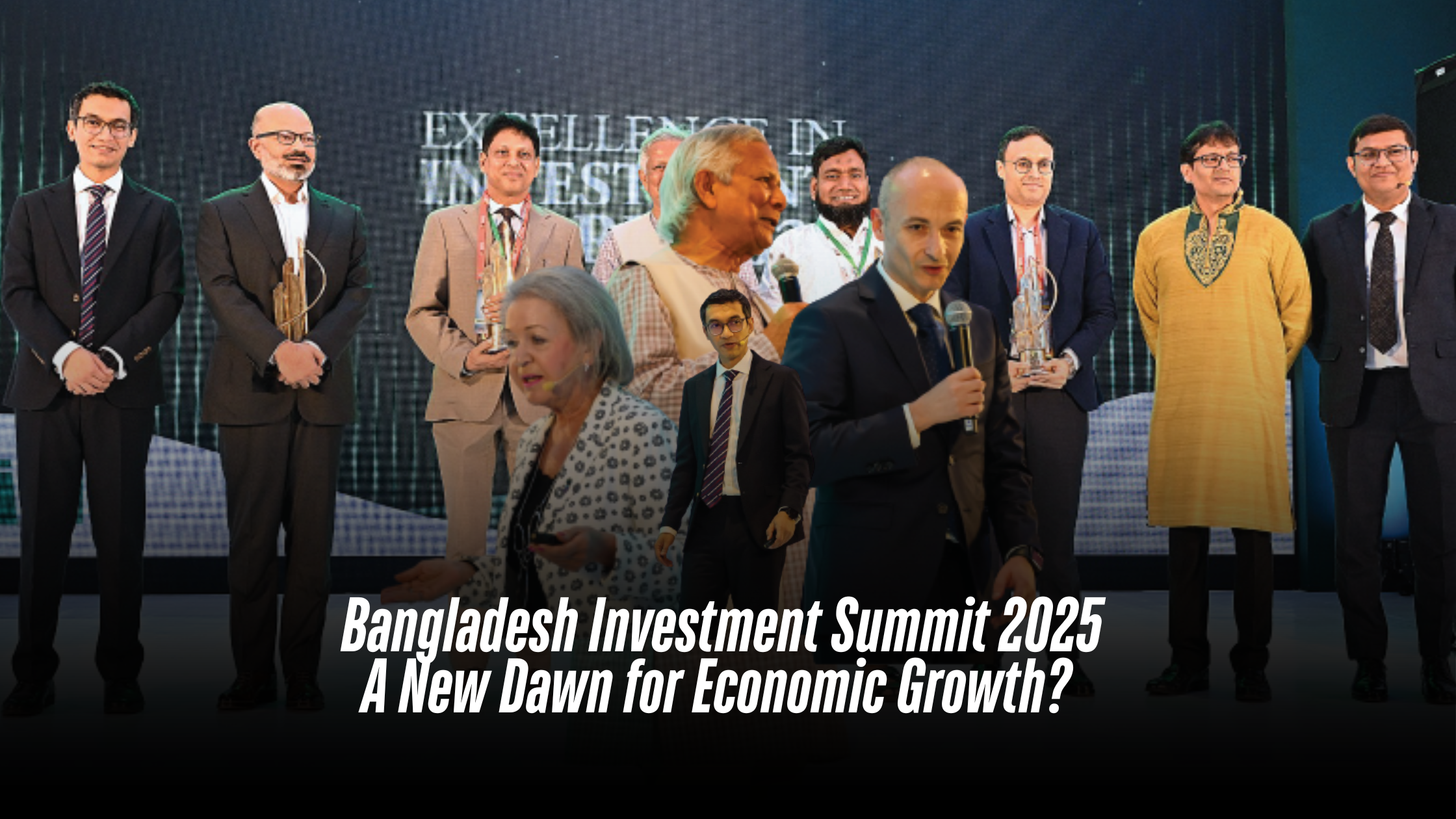
Bangladesh Investment Summit 2025 A New Dawn for Economic Growth?
Bangladesh now stands at a critical crossroads. As the country prepares to transition from a least-developed nation (LDC) to a middle-income economy in 2026, it grapples with significant hurdles. Despite years of economic resilience, enduring issues—such as import dependency, skill shortages, stagnant private investment, and declining foreign direct investment (FDI)—continue to slow progress. In this challenging environment, the Bangladesh Investment Summit 2025 emerged as a pivotal event, unveiling initial investment proposals worth Tk 31 billion (3100 crore) and igniting cautious optimism among policymakers and investors. Convergence of Promise and Challenges Organized by the Bangladesh Investment Development Authority (BIDA), the four-day Dhaka summit, held from April 7 to April 10, 2025, brought together over 550 investors and business representatives from more than 50 countries. Inaugurated by Chief Advisor Dr. Muhammad Yunus, the summit sought to reimagine Bangladesh’s global investment identity even as it faced structural challenges. Ultimately, the success of these initiatives will hinge on whether early commitments evolve into sustained and tangible investments. For years, Bangladesh’s investment landscape has remained largely stagnant. Overall investments have hovered between 24–28 percent of GDP, with private investment stuck at 22–24 percent and FDI persistently below 1.0 percent. Recent declines in private investment in FY2023 and FY2024, along with a continuous drop in FDI since FY2018, have been attributed to bureaucratic hurdles, policy unpredictability, and macroeconomic instability—particularly in managing exchange rates. Yet, amid these challenges, the summit has sparked a renewed sense of hope. Global Multinationals Betting on Bangladesh Three major international companies announced expansion plans during the summit: Inditex (Spain): The retail giant behind Zara reaffirmed Bangladesh’s role as a key sourcing hub and hinted at increased procurement. Lafarge Holcim: The cement leader discussed plans to broaden operations and explore carbon capture initiatives. Handa Industries (China): The company committed $150 million to develop textile, dyeing, and garment units in designated economic zones. In addition, Dubai-based DP World expressed interest in investing in Chattogram’s new Mooring Container Terminal. Celebrating Local Champions Local enterprises also received significant recognition at the event. Four Bangladeshi firms were honored for their contributions: bKash (Excellence in Investment): The trailb lazing mobile financial services provider backed by IFC, Ant Group, and SoftBank. Fabric Lagbe (Innovation Award): A digital marketplace that empowers traditional weavers. Walton (ESG Award): A leading local electronics manufacturer exporting to over 40 countries. Square Pharmaceuticals (Investment Excellence): A company that has grown from modest beginnings in Pabna to a globally recognized pharmaceutical powerhouse. These success stories underscore that, despite systemic challenges, Bangladeshi enterprises can thrive on the international stage. Global Investors Show Confidence There is growing international faith in Bangladesh’s revised approach to investment. Foreign investors have commended the interim government for taking proactive measures to attract FDI—a marked departure from previous administrations. A delegation of 60 investors from the U.S., South Korea, China, Japan, India, Australia, and the Netherlands toured key hubs such as the Korean Export Processing Zone (KEPZ) in Chattogram and the Japani Export Processing Zone (JEPZ) in Narayanganj, exploring opportunities in textiles, IT, and manufacturing. KEPZ: A Model Investment Hub Operated by South Korea’s Youngone Corporation, KEPZ has become a shining example of Bangladesh’s readiness for FDI. Investors were impressed by its well-established infrastructure, efficient licensing procedures, and worker-friendly amenities—including a hospital, a textile institute, a 40MW solar project, and an effluent treatment plant. With $700 million already invested, KEPZ now hosts 48 factories and employs 30,000 workers, 75 percent of whom are women. Forging Sustainable Partnerships The summit also facilitated key agreements. Notably, BIDA, the Commerce Ministry, ILO, and UNDP issued a joint declaration to promote sustainable and inclusive growth through targeted trade reforms. Additionally, UK Trade Envoy Baroness Rosie Winterton highlighted long-term opportunities in healthcare and education, paving the way for enduring global partnerships. Navigating the Road Ahead: Can Bangladesh Overcome Its Investment Slump? Despite the summit’s positive momentum, Bangladesh’s investment climate continues to face obstacles: High bank interest rates that deter private borrowing. Policy inconsistencies under the interim government create uncertainty. Weak FDI performance compared to regional competitors like Vietnam and India. Analysts stress that without significant structural reforms—streamlining bureaucracy, ensuring policy stability, and stabilizing the macroeconomy—Bangladesh may struggle to sustain the anticipated investment surge. Execution is Key The Bangladesh Investment Summit 2025 has successfully rebranded the country as an emerging investment destination. With multinationals such as Inditex, Lafarge Holcim, and Handa Industries pledging expansion and local leaders like bKash and Walton proving their global competitiveness, there is considerable cause for optimism. However, the real challenge now lies in execution. Only if Bangladesh addresses its business environment hurdles, refines regulatory frameworks, and maintains macroeconomic stability can this new momentum herald a transformative economic chapter. For now, the world watches closely—will Bangladesh seize this moment, or will these early promises fade away? Only time will tell. Written by Sajibur Rahman
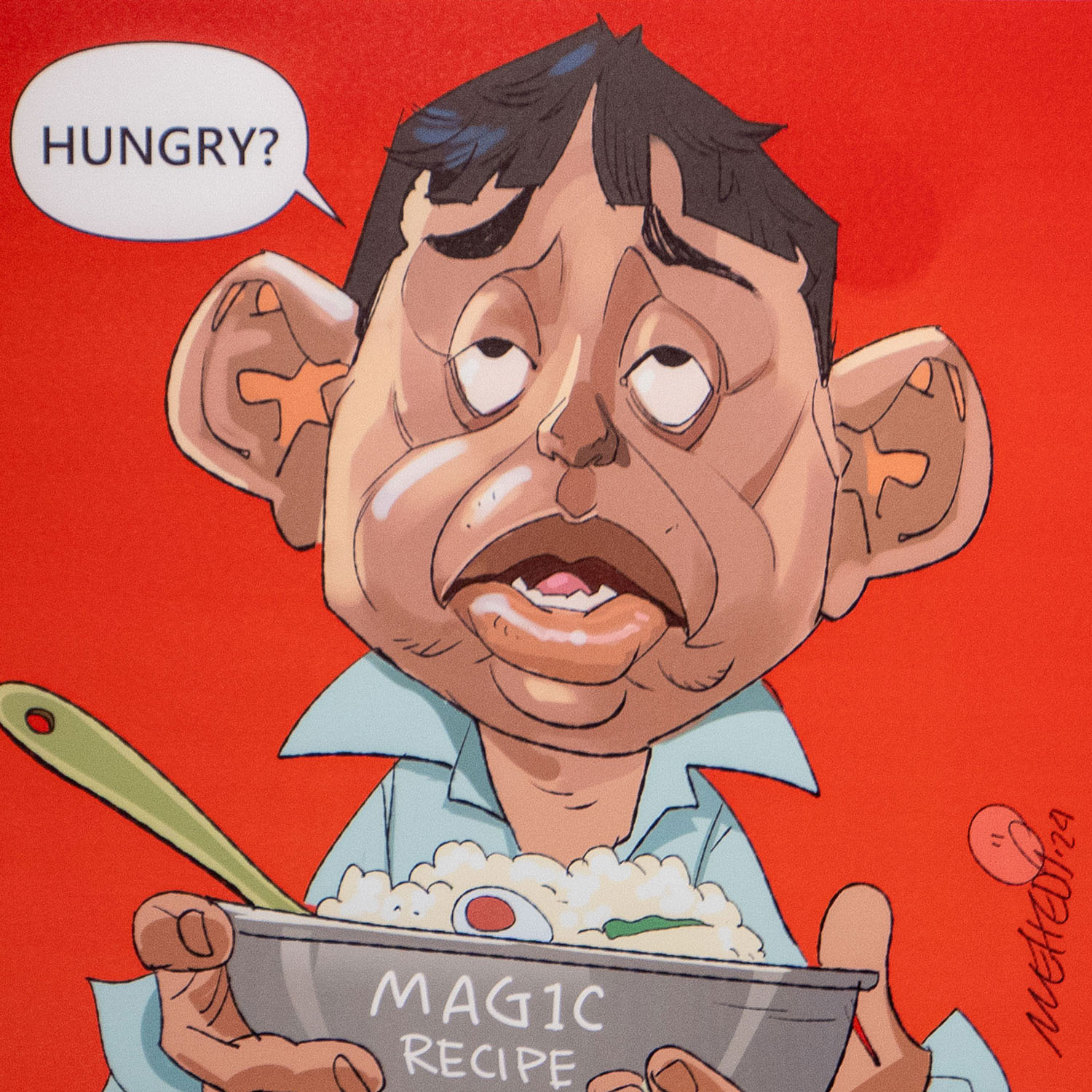
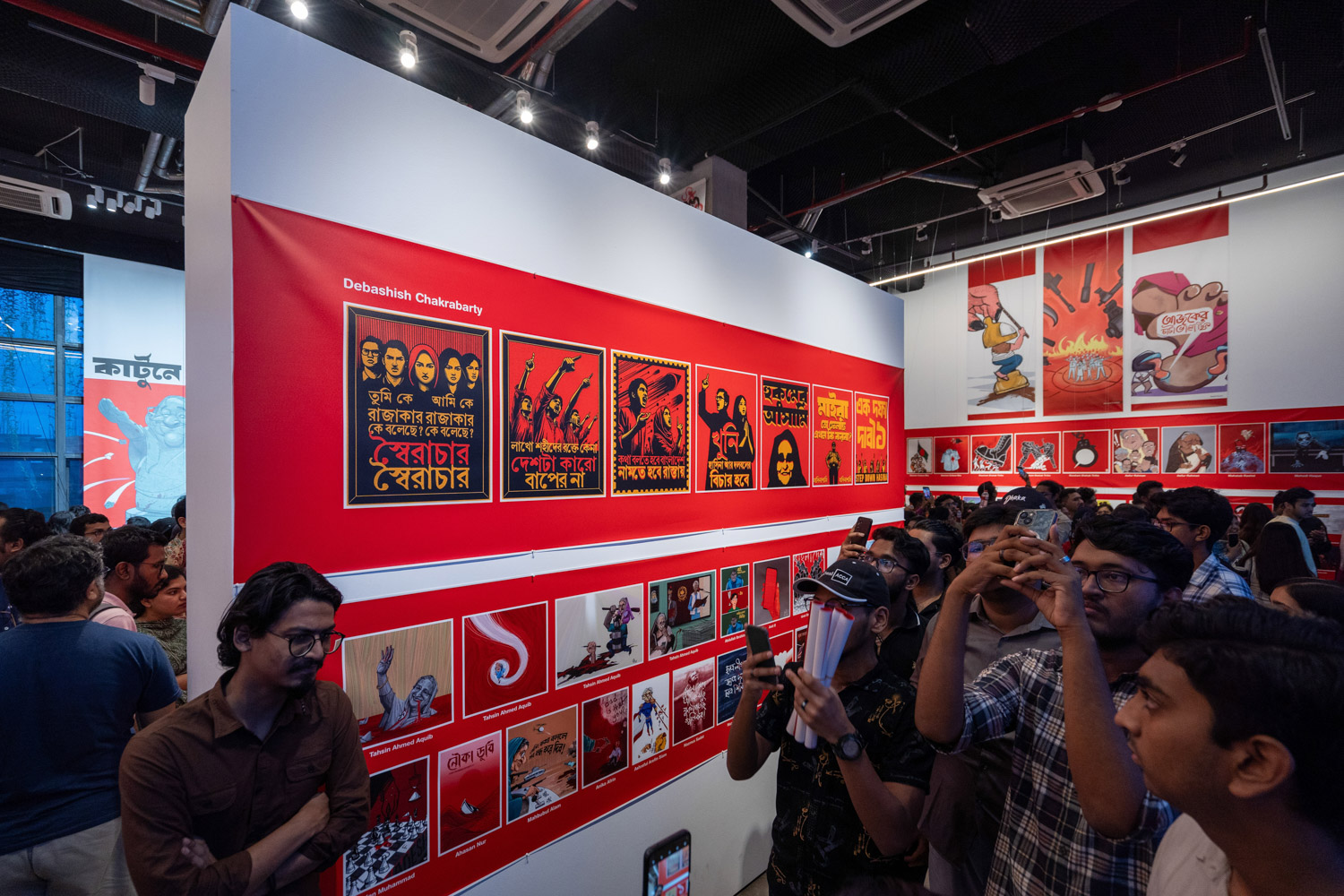




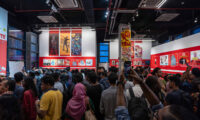
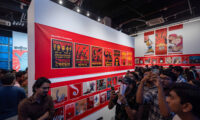

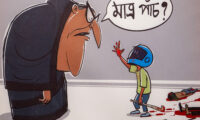
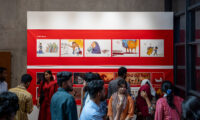
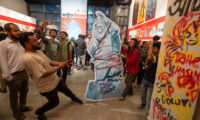
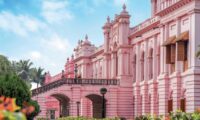




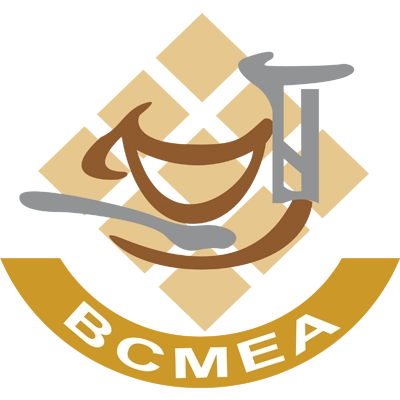

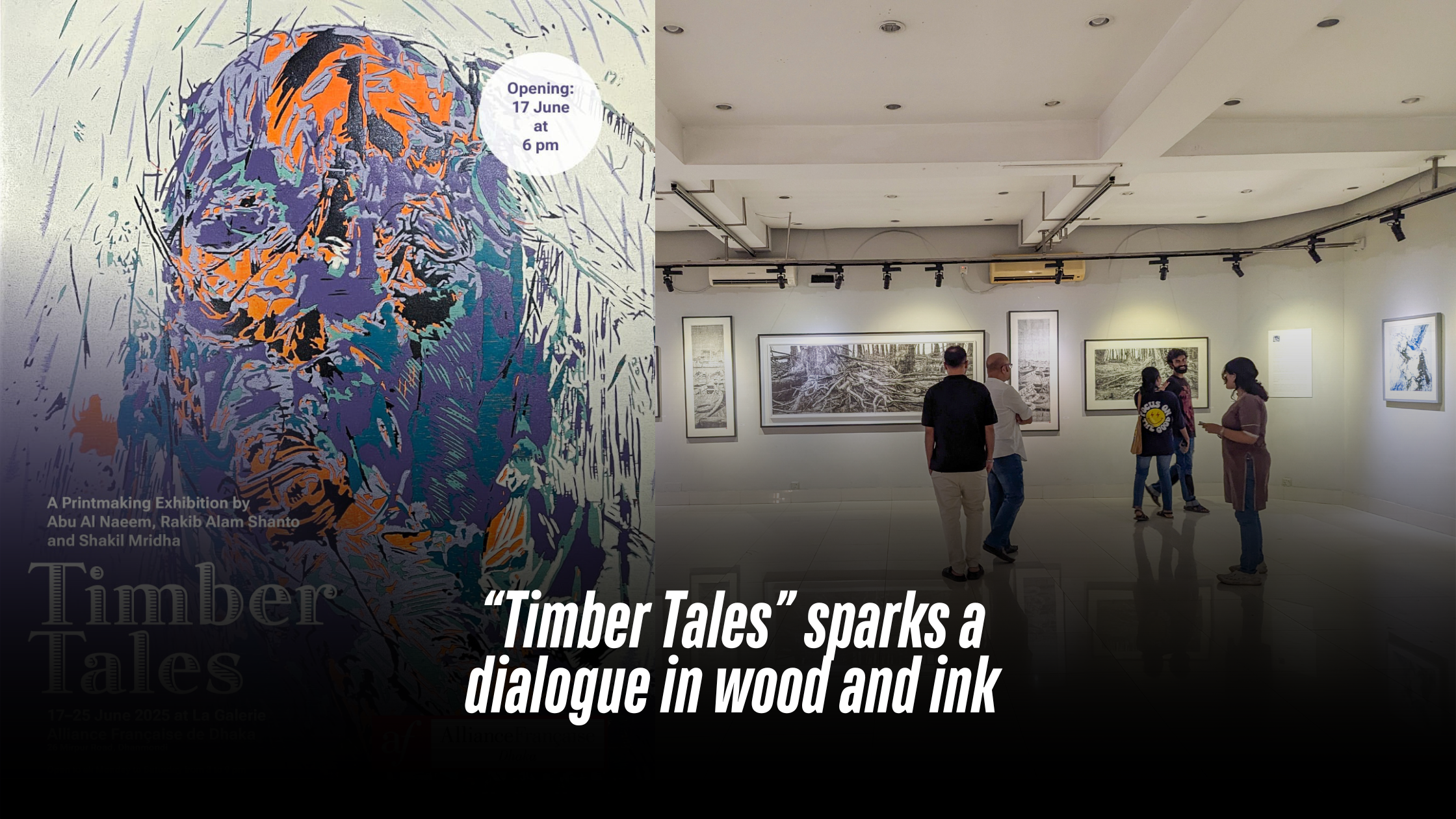
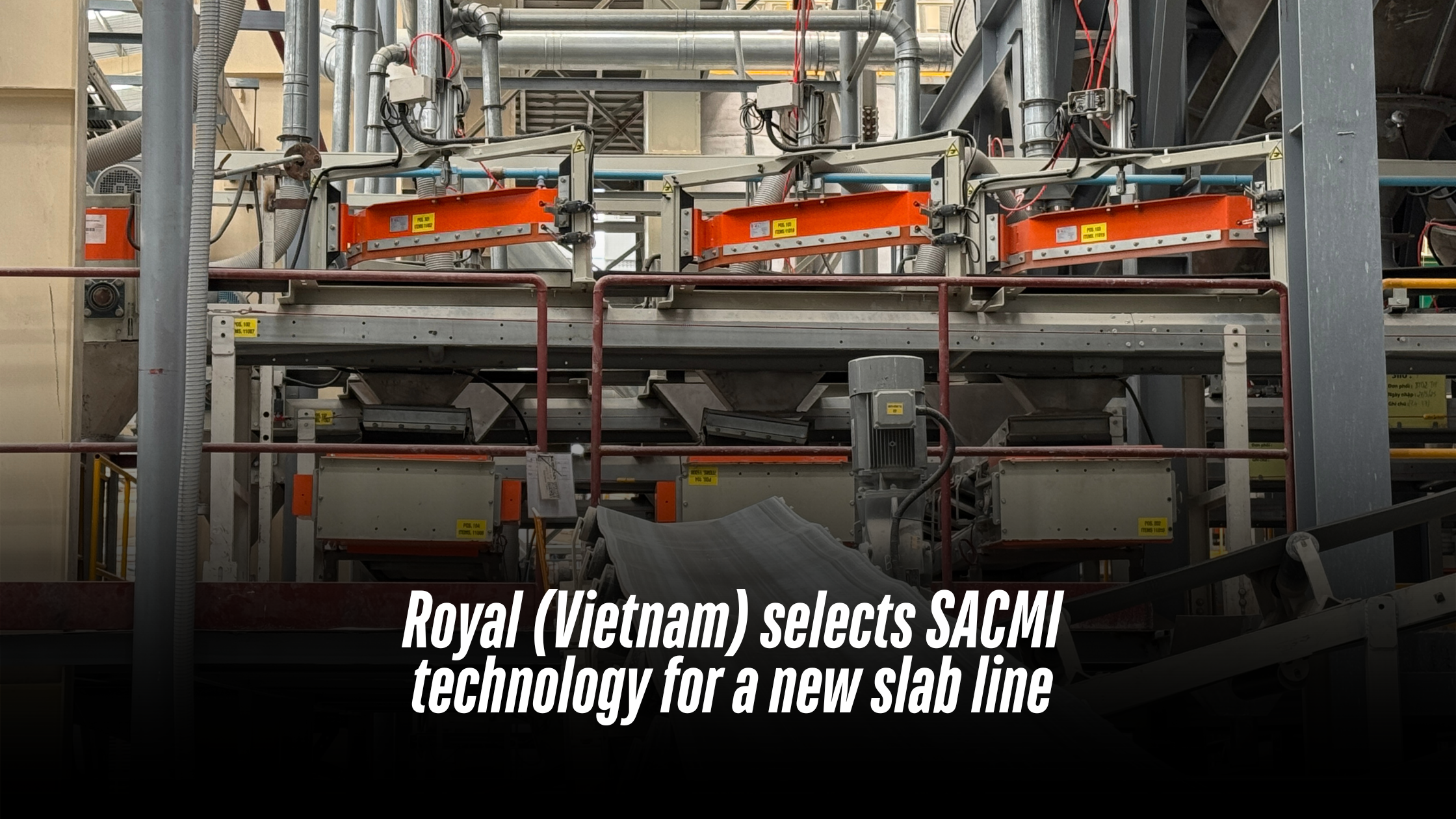
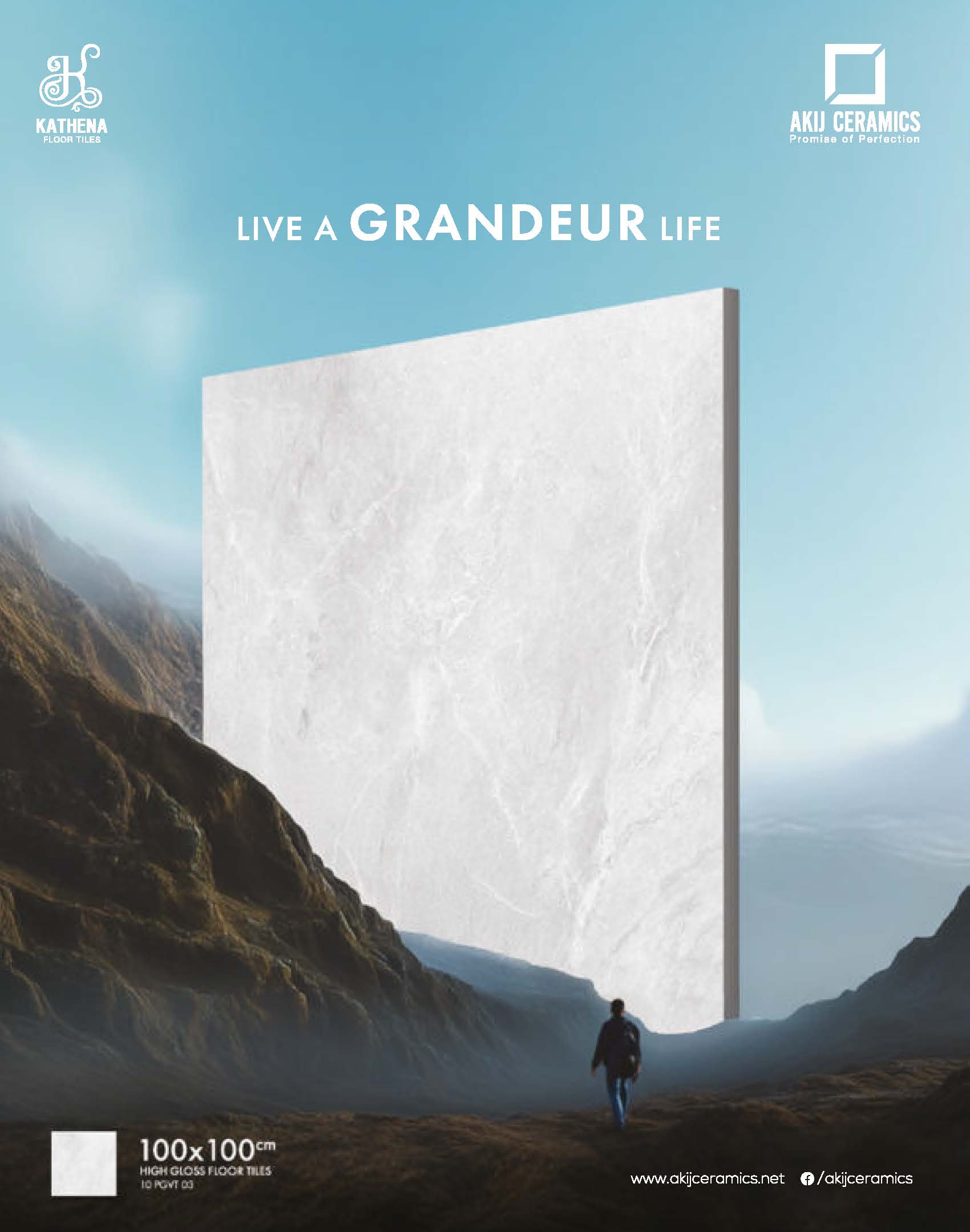



Здесь вы найдете сервис “Глаз Бога”, который проверить сведения по человеку по публичным данным.
Бот функционирует по ФИО, анализируя публичные материалы в Рунете. С его помощью можно получить бесплатный поиск и детальный анализ по имени.
Сервис обновлен на 2025 год и включает мультимедийные данные. Бот гарантирует проверить личность по госреестрам и предоставит информацию в режиме реального времени.
глаз бога телефон
Это бот — выбор в анализе граждан онлайн.
Прямо здесь доступен мессенджер-бот “Глаз Бога”, позволяющий собрать данные о гражданине из открытых источников.
Бот активно ищет по номеру телефона, обрабатывая актуальные базы в сети. Через бота осуществляется пять пробивов и детальный анализ по имени.
Инструмент обновлен согласно последним данным и поддерживает аудио-материалы. Бот гарантирует найти профили в соцсетях и покажет результаты за секунды.
глаз бога найти по номеру
Данный инструмент — помощник в анализе людей через Telegram.
На данном сайте доступен сервис “Глаз Бога”, который найти всю информацию о гражданине через открытые базы.
Инструмент активно ищет по фото, используя публичные материалы онлайн. С его помощью доступны бесплатный поиск и глубокий сбор по фото.
Инструмент актуален на август 2024 и поддерживает мультимедийные данные. Сервис гарантирует узнать данные в соцсетях и покажет результаты в режиме реального времени.
тг бот глаз бога бесплатно
Данный инструмент — помощник в анализе персон через Telegram.
где можно получить микрозайм без отказа [url=http://www.zajm-bez-otkaza-1.ru]где можно получить микрозайм без отказа[/url] .
кредит на 24 месяца без отказа [url=https://kredit-bez-otkaza-1.ru/]кредит на 24 месяца без отказа[/url] .
Здесь можно получить мессенджер-бот “Глаз Бога”, что найти всю информацию о гражданине из открытых источников.
Бот работает по ФИО, используя публичные материалы онлайн. Благодаря ему можно получить 5 бесплатных проверок и детальный анализ по имени.
Платфор ма обновлен согласно последним данным и поддерживает аудио-материалы. Бот гарантирует проверить личность в соцсетях и отобразит результаты за секунды.
глаз бога фото телеграм
Такой инструмент — помощник при поиске людей удаленно.
Наш сервис поможет получить информацию по заданному профилю.
Достаточно ввести никнейм в соцсетях, чтобы сформировать отчёт.
Бот сканирует открытые источники и цифровые следы.
глаз бога пробить человека
Информация обновляется мгновенно с фильтрацией мусора.
Идеально подходит для анализа профилей перед сотрудничеством .
Анонимность и актуальность информации — наш приоритет .
Наш сервис поможет получить информацию о любом человеке .
Достаточно ввести имя, фамилию , чтобы получить сведения .
Бот сканирует публичные данные и активность в сети .
рабочий глаз бога телеграм
Информация обновляется в реальном времени с проверкой достоверности .
Идеально подходит для анализа профилей перед сотрудничеством .
Анонимность и точность данных — гарантированы.
Нужно найти данные о человеке ? Наш сервис предоставит детальный отчет мгновенно.
Используйте продвинутые инструменты для анализа публичных записей в соцсетях .
Выясните контактные данные или активность через автоматизированный скан с верификацией результатов.
глаз бога телеграмм бот ссылка
Система функционирует с соблюдением GDPR, используя только общедоступную информацию.
Получите детализированную выжимку с историей аккаунтов и списком связей.
Доверьтесь проверенному решению для исследований — точность гарантирована!
Наш сервис поможет получить данные по заданному профилю.
Достаточно ввести имя, фамилию , чтобы сформировать отчёт.
Система анализирует публичные данные и активность в сети .
bot глаз бога
Информация обновляется мгновенно с фильтрацией мусора.
Идеально подходит для проверки партнёров перед сотрудничеством .
Анонимность и точность данных — наш приоритет .
Этот бот поможет получить данные по заданному профилю.
Достаточно ввести никнейм в соцсетях, чтобы получить сведения .
Бот сканирует открытые источники и цифровые следы.
глаз бога сайт
Информация обновляется в реальном времени с проверкой достоверности .
Оптимален для проверки партнёров перед сотрудничеством .
Конфиденциальность и актуальность информации — гарантированы.
Хотите найти данные о пользователе? Этот бот поможет детальный отчет мгновенно.
Воспользуйтесь продвинутые инструменты для анализа публичных записей в соцсетях .
Выясните место работы или интересы через систему мониторинга с гарантией точности .
глаз бога по номеру
Бот работает в рамках закона , обрабатывая открытые данные .
Получите детализированную выжимку с историей аккаунтов и списком связей.
Доверьтесь надежному помощнику для исследований — результаты вас удивят !
взрослый психолог [url=www.psihiatry-nn-1.ru]взрослый психолог[/url] .
Нужно найти данные о человеке ? Этот бот поможет полный профиль в режиме реального времени .
Используйте продвинутые инструменты для анализа публичных записей в открытых источниках.
Выясните место работы или активность через систему мониторинга с верификацией результатов.
bot глаз бога
Бот работает в рамках закона , используя только общедоступную информацию.
Получите детализированную выжимку с геолокационными метками и графиками активности .
Попробуйте надежному помощнику для исследований — результаты вас удивят !
Здесь доступна информация по любому лицу, включая полные анкеты.
Реестры включают граждан любой возрастной категории, мест проживания.
Информация собирается из открытых источников, что гарантирует точность.
Обнаружение выполняется по имени, что делает использование эффективным.
глаз бога актуальный бот
Также можно получить места работы а также полезная информация.
Все запросы обрабатываются в рамках законодательства, предотвращая разглашения.
Обратитесь к данному ресурсу, для поиска нужные сведения без лишних усилий.
Здесь предоставляется данные по запросу, от кратких контактов до подробные профили.
Базы данных содержат персон всех возрастов, профессий.
Данные агрегируются из открытых источников, обеспечивая достоверность.
Обнаружение осуществляется по фамилии, что делает использование удобным.
глаз бога телеграмм канал
Дополнительно доступны адреса а также полезная информация.
Обработка данных выполняются в соответствии с норм права, предотвращая разглашения.
Обратитесь к данному ресурсу, в целях получения искомые данные максимально быстро.
Здесь доступна данные о любом человеке, от кратких контактов до исчерпывающие сведения.
Реестры содержат граждан всех возрастов, мест проживания.
Данные агрегируются по официальным записям, что гарантирует достоверность.
Поиск выполняется по контактным данным, что делает процесс быстрым.
глаз бога пробить человека
Дополнительно предоставляются адреса а также важные сведения.
Обработка данных выполняются в соответствии с норм права, что исключает утечек.
Воспользуйтесь предложенной системе, для поиска искомые данные в кратчайшие сроки.
Нужно найти данные о пользователе? Наш сервис поможет полный профиль в режиме реального времени .
Используйте уникальные алгоритмы для анализа публичных записей в соцсетях .
Узнайте контактные данные или активность через систему мониторинга с верификацией результатов.
глаз бога по номеру
Система функционирует в рамках закона , используя только открытые данные .
Закажите детализированную выжимку с историей аккаунтов и списком связей.
Попробуйте проверенному решению для исследований — точность гарантирована!
Нужно найти информацию о человеке ? Этот бот поможет полный профиль мгновенно.
Воспользуйтесь уникальные алгоритмы для поиска цифровых следов в открытых источниках.
Узнайте контактные данные или интересы через автоматизированный скан с гарантией точности .
глаз бога в телеграме
Система функционирует в рамках закона , обрабатывая открытые данные .
Закажите детализированную выжимку с геолокационными метками и списком связей.
Попробуйте надежному помощнику для digital-расследований — результаты вас удивят !
Нужно найти информацию о человеке ? Наш сервис поможет детальный отчет мгновенно.
Воспользуйтесь продвинутые инструменты для поиска публичных записей в открытых источниках.
Выясните место работы или интересы через автоматизированный скан с верификацией результатов.
глаз бога телеграм
Система функционирует с соблюдением GDPR, используя только открытые данные .
Закажите детализированную выжимку с геолокационными метками и списком связей.
Доверьтесь надежному помощнику для исследований — результаты вас удивят !
На этом сайте представлены частные фотографии девушек , отобранные с профессиональным подходом.
Здесь можно найти портфолио , редкие материалы, тематические подборки для различных предпочтений .
Материалы модерируются перед публикацией, чтобы соответствовать стандартам и актуальность .
gay photos
Для удобства посетителей добавлены категории жанров, параметрам моделей.
Платформа соблюдает конфиденциальность и защиту авторских прав согласно правовым требованиям.
объявление услуги экскаватора [url=http://www.arenda-ehkskavatora-1.ru]объявление услуги экскаватора[/url] .
Подбирая компании для квартирного переезда важно учитывать её лицензирование и опыт работы .
Изучите отзывы клиентов или рейтинги в интернете, чтобы оценить профессионализм исполнителя.
Сравните цены , учитывая расстояние перевозки , сезонность и услуги упаковки.
https://abyua.forum24.ru/?1-13-0-00000024-000-0-0-1745438159
Убедитесь наличия страхового полиса и уточните условия компенсации в случае повреждений.
Оцените уровень сервиса: дружелюбие сотрудников , гибкость графика .
Узнайте, используются ли специализированные автомобили и защитные технологии для безопасной транспортировки.
Выгребная яма — это подземная ёмкость , предназначенная для сбора и частичной переработки отходов.
Принцип действия заключается в том, что жидкость из дома поступает в бак , где формируется слой ила, а жиры и масла всплывают наверх .
Основные элементы: входная труба, бетонный резервуар, соединительный канал и дренажное поле для дочистки воды .
https://mainbild.ru/forums/topic/septik-v-moskve-nedorogo/
Преимущества: низкие затраты , минимальное обслуживание и экологичность при соблюдении норм.
Критично важно не перегружать систему , иначе неотделённые примеси попадут в грунт, вызывая загрязнение.
Материалы изготовления: бетонные блоки, пластиковые ёмкости и стекловолоконные модули для разных условий монтажа .
안전한 게임 문화란 온라인 도박 분야에서 위험을 최소화하고 안전하고 공정한 환경을 조성하는 원칙과 실천을 의미합니다.
주된 목적은 플레이어 보호 과 규제 준수 을 통해 업계 신뢰도 제고를 이루는 것입니다.
제공자는 일시 중단 기능과 예산 한도 설정 같은 위험 관리 솔루션을 의무적으로 제공해야 합니다.
카지노사이트
이와 같은 실천은 기업 이미지 개선 과 법적 리스크 감소 이라는 이중 효과를 가져옵니다.
투명한 거래 내역 와 실시간 행동 모니터링 은 사기 예방 에 핵심적인 역할을 합니다.
발전 방향으로는 인공지능 예측 모델과 사용자 특성 반영 알림 도입이 필수적입니다.
precio del cosmet?logo [url=clinics-marbella-1.com]precio del cosmet?logo[/url] .
Осознанное участие в азартных развлечениях — это принципы, направленный на предотвращение рисков, включая ограничение доступа несовершеннолетним .
Сервисы должны внедрять инструменты контроля, такие как временные блокировки, чтобы избежать чрезмерного участия.
Регулярная подготовка персонала помогает реагировать на сигналы тревоги, например, частые крупные ставки.
https://sacramentolife.ru
Предоставляются ресурсы консультации экспертов, где можно получить помощь при проявлениях зависимости.
Следование нормам включает проверку возрастных данных для обеспечения прозрачности.
Ключевая цель — создать безопасную среду , где удовольствие сочетается с психологическим состоянием.
Patek Philippe — это вершина механического мастерства, где соединяются прецизионность и эстетика .
Основанная в 1839 году компания славится авторским контролем каждого изделия, требующей многолетнего опыта.
Инновации, такие как автоматические калибры, сделали бренд как новатора в индустрии.
Часы Patek Philippe обзор
Лимитированные серии демонстрируют сложные калибры и декоративные элементы, подчеркивая статус .
Текущие линейки сочетают инновационные материалы, сохраняя классический дизайн .
Это не просто часы — символ семейных традиций, передающий наследие мастерства из поколения в поколение.
Дом Patek Philippe — это эталон часового искусства , где соединяются точность и эстетика .
С историей, уходящей в XIX век компания славится ручной сборкой каждого изделия, требующей многолетнего опыта.
Изобретения, включая автоматические калибры, укрепили репутацию как новатора в индустрии.
Часы Патек Филипп цены
Лимитированные серии демонстрируют вечные календари и ручную гравировку , подчеркивая статус .
Текущие линейки сочетают инновационные материалы, сохраняя классический дизайн .
Это не просто часы — символ семейных традиций, передающий наследие мастерства из поколения в поколение.
лучшая клиника косметологии [url=www.clinics-marbella-1.ru]лучшая клиника косметологии[/url] .
¿Necesitas una piscina de jardín ? Las opciones de Intex y Bestway ofrecen diseños versátiles para usuarios de todas edades.
Las versiones desmontables garantizan resistencia extrema , mientras que los modelos hinchables ofrecen comodidad .
Modelos populares incluyen filtros integrados , asegurando bajo consumo de energía.
Para espacios reducidos , las piscinas familiares de 6 m son fáciles de instalar .
Además, accesorios como cobertores térmicos, barandillas resistentes y juguetes acuáticos aumentan la diversión.
Con garantía del fabricante , estas piscinas ofrecen valor a largo plazo .
https://www.mundopiscinas.net
Patek Philippe — это вершина часового искусства , где соединяются прецизионность и эстетика .
С историей, уходящей в XIX век компания славится ручной сборкой каждого изделия, требующей сотен часов .
Инновации, такие как автоматические калибры, укрепили репутацию как новатора в индустрии.
хронометры Патек Филипп фото
Лимитированные серии демонстрируют вечные календари и ручную гравировку , подчеркивая статус .
Современные модели сочетают традиционные методы , сохраняя классический дизайн .
Это не просто часы — символ семейных традиций, передающий инженерную элегантность из поколения в поколение.
Нужно собрать данные о пользователе? Наш сервис поможет полный профиль в режиме реального времени .
Используйте продвинутые инструменты для поиска публичных записей в открытых источниках.
Узнайте место работы или интересы через систему мониторинга с верификацией результатов.
глаз бога найти по фото
Система функционирует в рамках закона , обрабатывая общедоступную информацию.
Получите детализированную выжимку с историей аккаунтов и списком связей.
Доверьтесь проверенному решению для digital-расследований — точность гарантирована!
При выборе компании для квартирного переезда важно учитывать её лицензирование и репутацию на рынке.
Изучите отзывы клиентов или рейтинги в интернете, чтобы оценить надёжность исполнителя.
Уточните стоимость услуг, учитывая объём вещей, сезонность и дополнительные опции .
https://www.freeboard.com.ua/forum/viewtopic.php?pid=999959#p999959
Требуйте наличия гарантий сохранности имущества и уточните условия компенсации в случае повреждений.
Обратите внимание уровень сервиса: дружелюбие сотрудников , гибкость графика .
Узнайте, используются ли специализированные грузчики и упаковочные материалы для безопасной транспортировки.
Осознанное участие — это снижение негативных последствий для участников, включая саморегуляцию поведения.
Важно планировать бюджет , чтобы сохранять контроль над затратами.
Используйте инструменты самоисключения , чтобы приостановить активность в случае чрезмерного увлечения .
Поддержка игроков включает горячие линии , где можно обсудить проблемы при трудных ситуациях.
Участвуйте в компании, чтобы сохранять социальный контакт , ведь семейная атмосфера делают процесс более контролируемым .
казино
Изучайте правила платформы: лицензия оператора гарантирует защиту данных.
For years, I assumed following instructions was enough. Doctors give you pills — you don’t question the process. It felt clean. Then cracks began to show.
First came the fatigue. I blamed stress. And deep down, I knew something was off. I searched forums. The warnings were there — just buried in jargon.
fildena extra power 150 mg
It finally hit me: your body isn’t a template. The reaction isn’t always immediate, but it’s real. Damage accumulates. And still we keep swallowing.
Now I question more. Not because I’m paranoid. I take health personally now. It makes appointments awkward. I’m not trying to be difficult — I’m trying to stay alive. The turning point, it would be keyword.
Patek Philippe — это pinnacle механического мастерства, где сочетаются точность и эстетика .
С историей, уходящей в XIX век компания славится ручной сборкой каждого изделия, требующей сотен часов .
Инновации, такие как ключевой механизм 1842 года , укрепили репутацию как новатора в индустрии.
https://patek-philippe-shop.ru
Коллекции Grand Complications демонстрируют вечные календари и декоративные элементы, выделяя уникальность.
Текущие линейки сочетают традиционные методы , сохраняя классический дизайн .
Patek Philippe — символ вечной ценности , передающий инженерную элегантность из поколения в поколение.